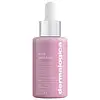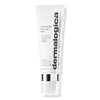What's inside
What's inside
 Key Ingredients
Key Ingredients

 Benefits
Benefits

 Concerns
Concerns

 Ingredients Side-by-side
Ingredients Side-by-side

Water
Skin ConditioningLactobacillus/Punica Granatum Fruit Ferment Extract
Skin ConditioningGlycolic Acid
BufferingAminomethyl Propanol
BufferingPhytic Acid
Gluconolactone
Skin ConditioningGlycerin
HumectantPropanediol
SolventLactic Acid
BufferingSalicylic Acid
MaskingTranexamic Acid
AstringentHydroxyacetophenone
AntioxidantSodium Hyaluronate
HumectantHydrolyzed Gardenia Florida Extract
AntioxidantZanthoxylum Bungeanum Fruit Extract
Skin ConditioningVaccinium Macrocarpon Fruit Extract
AstringentHelianthus Annuus Seed Oil
EmollientCitrus Aurantium Bergamia Fruit Oil
MaskingCitrus Nobilis Peel Oil
MaskingLeuconostoc/Radish Root Ferment Filtrate
AntimicrobialRaspberry Ketone
MaskingRosa Damascena Flower
Skin ConditioningSodium PCA
HumectantSucrose Distearate
EmollientSuccinoglycan
Skin ConditioningUrea
BufferingCeramide NP
Skin ConditioningPhytosphingosine
Skin ConditioningHydrogenated Lecithin
EmulsifyingCaprylyl Glycol
EmollientOleyl Alcohol
EmollientTriolein
Skin ConditioningCaprylic/Capric Triglyceride
MaskingOleic Acid
EmollientEthoxydiglycol
HumectantCholesterol
EmollientTrehalose
HumectantPolyquaternium-51
Skin ConditioningMaltodextrin
AbsorbentEthyl Acetate
PerfumingCaprylhydroxamic Acid
1,2-Hexanediol
Skin ConditioningPolyacrylate Crosspolymer-6
Emulsion StabilisingStearic Acid
CleansingGamma-Undecalactone
PerfumingWater, Lactobacillus/Punica Granatum Fruit Ferment Extract, Glycolic Acid, Aminomethyl Propanol, Phytic Acid, Gluconolactone, Glycerin, Propanediol, Lactic Acid, Salicylic Acid, Tranexamic Acid, Hydroxyacetophenone, Sodium Hyaluronate, Hydrolyzed Gardenia Florida Extract, Zanthoxylum Bungeanum Fruit Extract, Vaccinium Macrocarpon Fruit Extract, Helianthus Annuus Seed Oil, Citrus Aurantium Bergamia Fruit Oil, Citrus Nobilis Peel Oil, Leuconostoc/Radish Root Ferment Filtrate, Raspberry Ketone, Rosa Damascena Flower, Sodium PCA, Sucrose Distearate, Succinoglycan, Urea, Ceramide NP, Phytosphingosine, Hydrogenated Lecithin, Caprylyl Glycol, Oleyl Alcohol, Triolein, Caprylic/Capric Triglyceride, Oleic Acid, Ethoxydiglycol, Cholesterol, Trehalose, Polyquaternium-51, Maltodextrin, Ethyl Acetate, Caprylhydroxamic Acid, 1,2-Hexanediol, Polyacrylate Crosspolymer-6, Stearic Acid, Gamma-Undecalactone
Water
Skin ConditioningGlycerin
HumectantButylene Glycol
HumectantLactobacillus/Pumpkin Fruit Ferment Filtrate
Skin ConditioningGlycolic Acid
BufferingPolysorbate 20
EmulsifyingNiacinamide
SmoothingC12-18 Alkanoyl Glycerin/Sebacic Acid Copolymer
Gluconolactone
Skin ConditioningPhytic Acid
Mandelic Acid
AntimicrobialButyrospermum Parkii Butter
Skin ConditioningElaeis Guineensis Butter
EmollientSodium Hydroxide
BufferingTetrahydroxypropyl Ethylenediamine
Hectorite
AbsorbentBehenyl Alcohol
EmollientArachidyl Alcohol
EmollientTranexamic Acid
AstringentDipotassium Glycyrrhizate
HumectantSimmondsia Chinensis Seed Oil
EmollientCitrus Aurantium Dulcis Peel Oil
MaskingCitrus Aurantium Bergamia Fruit Oil
MaskingCitrus Limon Peel Oil
MaskingCitrus Paradisi Peel Oil
MaskingRicinus Communis Seed Oil
MaskingZingiber Officinale Root Oil
MaskingLavandula Angustifolia Oil
MaskingJasminum Sambac Flower Extract
MaskingVanilla Planifolia Fruit
MaskingViola Odorata Leaf Extract
MaskingCocos Nucifera Oil
MaskingLeuconostoc/Radish Root Ferment Filtrate
AntimicrobialPeat Extract
Skin ConditioningJuniperus Virginiana Oil
MaskingCurcuma Longa Root Extract
MaskingPrunus Amygdalus Dulcis Oil
Skin ConditioningIsochrysis Galbana Extract
Skin ConditioningNannochloropsis Gaditana Extract
AntioxidantIlex Paraguariensis Leaf Extract
PerfumingCucumis Sativus Seed Oil
EmollientMimosa Tenuiflora Bark Extract
Skin ProtectingTocopherol
AntioxidantSqualene
EmollientPhosphatidylcholine
EmulsifyingCaprylyl Glycol
EmollientLecithin
EmollientGlyceryl Stearate
EmollientLauryl Alcohol
EmollientEthoxydiglycol
HumectantArachidyl Glucoside
EmulsifyingPalmitic Acid
EmollientMyristyl Alcohol
EmollientBisabolol
MaskingPolyquaternium-80
CleansingDidecyldimonium Chloride
EmulsifyingBeta-Sitosterol
Emulsion StabilisingDipteryx Odorata Seed Extract
MaskingXanthan Gum
EmulsifyingMethylpropanediol
SolventCetyl Alcohol
EmollientTitanium Dioxide
Cosmetic ColorantTetrasodium Glutamate Diacetate
Citric Acid
BufferingStearic Acid
CleansingHydroxyethylcellulose
Emulsion StabilisingCistus Ladaniferus Resin
MaskingStyrax Benzoin Resin Extract
MaskingSodium Benzoate
MaskingPotassium Sorbate
PreservativeLimonene
PerfumingWater, Glycerin, Butylene Glycol, Lactobacillus/Pumpkin Fruit Ferment Filtrate, Glycolic Acid, Polysorbate 20, Niacinamide, C12-18 Alkanoyl Glycerin/Sebacic Acid Copolymer, Gluconolactone, Phytic Acid, Mandelic Acid, Butyrospermum Parkii Butter, Elaeis Guineensis Butter, Sodium Hydroxide, Tetrahydroxypropyl Ethylenediamine, Hectorite, Behenyl Alcohol, Arachidyl Alcohol, Tranexamic Acid, Dipotassium Glycyrrhizate, Simmondsia Chinensis Seed Oil, Citrus Aurantium Dulcis Peel Oil, Citrus Aurantium Bergamia Fruit Oil, Citrus Limon Peel Oil, Citrus Paradisi Peel Oil, Ricinus Communis Seed Oil, Zingiber Officinale Root Oil, Lavandula Angustifolia Oil, Jasminum Sambac Flower Extract, Vanilla Planifolia Fruit, Viola Odorata Leaf Extract, Cocos Nucifera Oil, Leuconostoc/Radish Root Ferment Filtrate, Peat Extract, Juniperus Virginiana Oil, Curcuma Longa Root Extract, Prunus Amygdalus Dulcis Oil, Isochrysis Galbana Extract, Nannochloropsis Gaditana Extract, Ilex Paraguariensis Leaf Extract, Cucumis Sativus Seed Oil, Mimosa Tenuiflora Bark Extract, Tocopherol, Squalene, Phosphatidylcholine, Caprylyl Glycol, Lecithin, Glyceryl Stearate, Lauryl Alcohol, Ethoxydiglycol, Arachidyl Glucoside, Palmitic Acid, Myristyl Alcohol, Bisabolol, Polyquaternium-80, Didecyldimonium Chloride, Beta-Sitosterol, Dipteryx Odorata Seed Extract, Xanthan Gum, Methylpropanediol, Cetyl Alcohol, Titanium Dioxide, Tetrasodium Glutamate Diacetate, Citric Acid, Stearic Acid, Hydroxyethylcellulose, Cistus Ladaniferus Resin, Styrax Benzoin Resin Extract, Sodium Benzoate, Potassium Sorbate, Limonene
 Reviews
Reviews

Ingredients Explained
These ingredients are found in both products.
Ingredients higher up in an ingredient list are typically present in a larger amount.
Caprylyl Glycol is a humectant and emollient, meaning it attracts and preserves moisture.
It is a common ingredient in many products, especially those designed to hydrate skin. The primary benefits are retaining moisture, skin softening, and promoting a healthy skin barrier.
Though Caprylyl Glycol is an alcohol derived from fatty acids, it is not the kind that can dry out skin.
This ingredient is also used as a preservative to extend the life of products. It has slight antimicrobial properties.
Learn more about Caprylyl GlycolCitrus Aurantium Bergamia Fruit Oil is the oil from the bergamot orange. It is native to Italy.
This ingredient is used to add fragrance to products. It contains limonene, linalool, and linalyl acetate.
The term 'fragrance' is not regulated in many countries. In many cases, it is up to the brand to define this term. For instance, many brands choose to label themselves as "fragrance-free" because they are not using synthetic fragrances. However, their products may still contain ingredients such as essential oils that are considered a fragrance.
When used topically, Citrus Aurantium Bergamia Fruit Oil is a photosensitizer due to its furanocoumarins. Photosensitizers make the skin and eyes much more sensitive to sunlight. Photosensitizers are linked to skin cancer.
However, more cosmetics using Citrus Aurantium Bergamia Fruit Oil are removing the furanocoumarins.
Bergamot oil was also found to have anti-inflammatory, antibacterial and antifungal properties.
Learn more about Citrus Aurantium Bergamia Fruit OilEthoxydiglycol is a synthetic solvent.
Solvents are used to keep ingredients together in a product. They can help dissolve ingredients to stable bases or help evenly distribute ingredients throughout the product.
Ethoxydiglycol also helps deliver other key ingredients into the skin.
Learn more about EthoxydiglycolGluconolactone is a PHA. PHAs are a great gentle alternative to traditional AHAs.
When applied, Gluconolactone has the same affect on skin as AHAs such as lactic acid. It helps dissolve the dead skin cells in the top layer of your skin. This improves texture and brightens the skin.
PHAs are more gentle than AHAs due to their larger structure. They do not penetrate as deeply as AHAs and take a longer time to dissolve dead cells. Studies show PHAs do not cause as much irritation.
Gluconolactone has some interesting properties:
In a 2004 study, Gluconolactone was found to prevent UV damage in mouse skin cells and has not been found to increase sun sensitivity. However, we still recommend wearing SPF daily.
This ingredient is is an created by reacting gluconic acid with an alcohol.
Learn more about GluconolactoneGlycerin is already naturally found in your skin. It helps moisturize and protect your skin.
A study from 2016 found glycerin to be more effective as a humectant than AHAs and hyaluronic acid.
As a humectant, it helps the skin stay hydrated by pulling moisture to your skin. The low molecular weight of glycerin allows it to pull moisture into the deeper layers of your skin.
Hydrated skin improves your skin barrier; Your skin barrier helps protect against irritants and bacteria.
Glycerin has also been found to have antimicrobial and antiviral properties. Due to these properties, glycerin is often used in wound and burn treatments.
In cosmetics, glycerin is usually derived from plants such as soybean or palm. However, it can also be sourced from animals, such as tallow or animal fat.
This ingredient is organic, colorless, odorless, and non-toxic.
Glycerin is the name for this ingredient in American English. British English uses Glycerol/Glycerine.
Learn more about GlycerinGlycolic Acid is arguably the most famous alpha hydroxy acid (AHA) with tons of research backing its benefits.
It is found naturally in sugar cane but the form used in skincare is usually synthetic for purity and stability.
Glycolic acid removes the top layer of dead skin cells to allow newer and fresher ones to emerge.
AHAs work by breaking down the structural “glue” that holds old skin cells in place. When that buildup is gone, your skin can renew itself more efficiently.
Research also shows glycolic acid stimulates collagen production, helping to firm and thicken the skin over time. This is one of its biggest advantages over other AHAs.
Overall, glycolic acid helps with:
Fun fact: Glycolic acid boosts skin hydration by helping it produce molecules that increase hyaluronic acid naturally.
To work best, glycolic acid products should have a pH between 3-4 (that’s where exfoliation is most effective but still gentle on skin).
The pH and concentration of a product are key to its effectiveness:
It is normal to feel a slight stinging sensation when using glycolic acid. This usually fades as your skin adjusts.
Because glycolic acid has the smallest molecular size in the AHA family, it can penetrate deeper, which enhances its effectiveness but also makes it more likely to irritate sensitive skin.
If your skin is very sensitive or prone to rosacea, glycolic acid may be too strong; in that case, try milder options like lactic acid or a PHA instead.
Recent studies suggest glycolic acid might even help protect against UV damage. But don’t skip sunscreen! Freshly exfoliated skin is more sensitive to the sun.
Glycolic acid is a skincare superstar. It smooths, brightens, hydrates, and firms the skin. Unless you’re highly sensitive, it’s well worth adding to your routine.
Read more about some other popular AHA's here:
Learn more about Glycolic AcidLeuconostoc/Radish Root Ferment Filtrate is a natural preservative. It comes from fermenting radish roots with a bacteria called leuconostoc.
Leuconostoc comes from lactic acid.
This ingredient has antimicrobial properties and helps prevent the growth of bacteria in a product.
Leuconostoc is used to make the traditional Korean side-dish, kimchi. It is also used to make sourdough bread (both incredibly yummy foods).
Learn more about Leuconostoc/Radish Root Ferment FiltratePhytic Acid is a gentle AHA and antioxidant. AHAs are chemical exfoliants that help remove dead skin cells. Phytic Acid has a slight and mild exfoliating effect.
The chemical makeup makes it classified as an AHA, much like lactic acid.
In some cases, it is a chelating agent. Chelating agents help prevent metals from binding to water, helping to stabilize the ingredients in a product.
An interesting fact about phytic acid is that it is considered an antinutrient. People do not have the enzyme needed to properly breakdown and digest phytic acid. When ingested, phytic acid binds to minerals and prevents them from being absorbed.
Read more about some other popular AHA's here:
Learn more about Phytic AcidStearic Acid is a fatty acid. It is an emollient, emulsifier, and texture enhancer.
As an emollient, stearic acid helps soften skin. It aids the skin's protective barrier by preventing water loss. It also provides a gentle cleansing effect without stripping away natural oils.
Stearic acid may also be used to enhance the texture of products. It can add volume and stabilize ingredients such as water and oil. This can help water and oil ingredients from separating.
Sources of stearic acid include animal or vegetable fats/oils such as coconut or shea. It can be naturally found in butter, cocoa butter, shea butter, vegetable fats, and animal tallow.
This ingredient may not be Malassezia folliculitis, or fungal-acne safe.
Learn more about Stearic AcidTranexamic Acid is best used for treating hyperpigmentation, discoloration, and melasma. It can also help build a stronger skin barrier.
Once applied, Tranexamic Acid starts decreasing inflammation from UV exposure. Tranexamic Acid also prevents our skin cells from meeting the pigment production cells.
Its brightening property makes it great at reducing the appearance of acne scars and marks.
Fun fact: Tranexamic Acid is also a medication used to reduce heavy bleeding.
This acid is derived from lysine, an amino acid.
Learn more about Tranexamic AcidWater. It's the most common cosmetic ingredient of all. You'll usually see it at the top of ingredient lists, meaning that it makes up the largest part of the product.
So why is it so popular? Water most often acts as a solvent - this means that it helps dissolve other ingredients into the formulation.
You'll also recognize water as that liquid we all need to stay alive. If you see this, drink a glass of water. Stay hydrated!
Learn more about Water